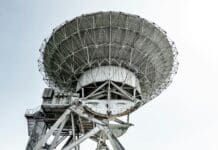This post is also available in:
 עברית (Hebrew)
עברית (Hebrew)
Solar energy has long been an important candidate for generating clean power in a time when climate change is becoming an increasing issue in our everyday lives. However, the field is currently dominated by silicon-based solar technologies, which have high production costs and provide limited flexibility in product applications.
A team of researchers from the City University of Hong Kong (CityUHK) hopes to resolve this issue by producing a new generation of printable perovskite solar cells that promise higher efficiency, improved stability, and reduced costs, as well as a minimal carbon footprint. Their innovative perovskite cells have achieved a power conversion efficiency exceeding 26% in laboratory tests. Additionally, according to a report by Interesting Engineering, the researchers have addressed common stability issues, demonstrating that their cells have an estimated lifespan of over 20 years through accelerated aging tests, matching the durability of current silicon-based cells. The team aims to set up a pilot production line for these advanced solar cells within the first 18 months.
This new generation of perovskite solar cells offers several compelling advantages over traditional silicon-based solar panels. One of the most notable benefits is their ability to be manufactured at remarkably low temperatures. Unlike silicon solar cells, which require high-temperature processes exceeding 1,000°C and involve complex production steps, perovskite solar cells can be “printed” using perovskite precursor inks at temperatures as low as 100°C. This lower-temperature processing not only simplifies the manufacturing process but also significantly reduces energy consumption and production costs. The ease of production is akin to printing newspapers, allowing for rapid mass production that can drive down costs further, making perovskite cells potentially half as expensive to produce as silicon solar cells.
In addition, perovskite solar cells exhibit superior flexibility and adaptability. Their ability to perform well across a wide range of angles and light intensities means they are less sensitive to variations in sunlight, which enhances their efficiency in diverse environments. This flexibility makes them suitable for integration into various applications, such as building-integrated photovoltaics or wearable electronics.


























